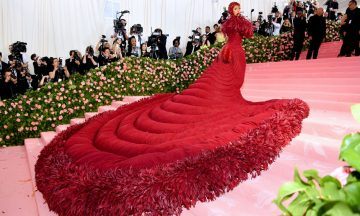Jon Savage in The Guardian:
 First published in 1964, Susan Sontag’s essay Notes on Camp remains a groundbreaking piece of cultural activism. Sontag’s achievement was to give a name to an aesthetic that was everywhere yet until then had gone largely unremarked. It was visible in Dusty Springfield’s mascara and beehive, there in late-night TV reruns of old Humphrey Bogart movies; there in Andy Warhol’s screen prints Flowers andElectric Chair – images from advertising and the news media copied and provocatively represented. Like pop, camp was the future; as Warhol had observed on his cross-country trip in 1963, it was omnipresent, so ubiquitous that it wasn’t simply an aesthetic. It was an environment, a climate, with profound implications for western culture. To notice it, all you needed was the keen eye of an outsider.
First published in 1964, Susan Sontag’s essay Notes on Camp remains a groundbreaking piece of cultural activism. Sontag’s achievement was to give a name to an aesthetic that was everywhere yet until then had gone largely unremarked. It was visible in Dusty Springfield’s mascara and beehive, there in late-night TV reruns of old Humphrey Bogart movies; there in Andy Warhol’s screen prints Flowers andElectric Chair – images from advertising and the news media copied and provocatively represented. Like pop, camp was the future; as Warhol had observed on his cross-country trip in 1963, it was omnipresent, so ubiquitous that it wasn’t simply an aesthetic. It was an environment, a climate, with profound implications for western culture. To notice it, all you needed was the keen eye of an outsider.
In 58 paragraphs, Sontag conducted an intuitive yet rigorous examination of a phenomenon that she defined as “a badge of identity among small urban cliques”. And this “private code” constituted a new mode of perception that collapsed traditional ideas of high and low culture, of elitism and mass appeal. Here was a new hierarchy of taste, no longer defined by the old gatekeepers. Camp was a “way of seeing the world as an aesthetic phenomenon”, she wrote, “in terms of the degree of artifice, of stylisation”. Sontag’s early passages outline the now overfamiliar “so bad it’s good” aesthetic: it could be found in the drawings of Aubrey Beardsley, the 1933 film King Kong and Tiffany lamps. Today, Sontag’s observations remind us of how objects and works that were déclassé in the 1960s have become part of accepted taste. She predicted this would happen, of course: “The canon of Camp can change. Time has a great deal to do with it. Time may enhance what seems simply dogged or lacking in fantasy now because we are too close to it.”
More here.
